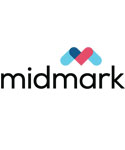Phase 1: Preanesthesia
Step 1: Preanesthetic planning
Step 2: Client education
Individualized Anesthetic/Analgesic Plan and Client Communication
An individualized anesthetic plan with specific and sequential steps ensures the continuum of care throughout the entire anesthetic process. A complete anesthetic plan must address all phases of anesthesia, with inclusion of perioperative analgesia throughout each phase. Although each patient should be treated as an individual, having a set of anesthesia plans that are used repeatedly is appropriate. This allows the anesthesia team a level of comfort with their anesthesia protocols while adjusting plans based on individual patient needs.
The preanesthesia phase includes not only the choice of preanesthetic sedatives and analgesics but also a full preanesthetic evaluation and stabilization of the patient, if necessary. Categorization of patients using the American Society of Anesthesiologists (ASA) Patient Status Scale (scoring of 1–5) provides a framework for evaluation of patient health and determination of stabilization requirements prior to anesthesia (available at aaha.org/anesthesia). An increase in ASA status from 1 or 2 to 3, or from 3 to 4 or 5, increased the odds of anesthesia-related death in dogs and cats.4 In another study, an ASA status of ≥3 increased the odds of anesthesia-related death when compared with an ASA status of ≤2, with cats having a higher odds ratio than dogs for anesthetic death.4,5
| ASA Status | Description | Example |
| 1 | Normal healthy patient | Healthy patient for neutering |
| 2 | Patient with mild systemic disease | Dog with well compensated mild mitral valve degeneration |
| 3 | Patient with moderate systemic disease | Cat with CKD, IRIS stage 3 |
| 4 | Patient with severe systemic disease that is a constant threat to life | Dog with hemoabdomen secondary to bleeding splenic mass |
| 5 | Moribund patient who is not expected to survive without the operation | Hypotensive, hypothermic, obtunded cat with septic abdomen |
Risks specific to the patient’s size and age and the surgical or medical procedure need to be considered.4–6 Disease-related risks should be corrected or minimized if possible.6–8
Monitoring of physiologic parameters and provision of physiologic support are integral to the plan in order to reduce the likelihood of adverse events.4–6 Also critical is a plan for anesthetic recovery and for postdischarge care.4–6 Resources such as staffing,equipment, and drug availability should be considered throughout the entire anesthetic plan.
To further minimize patient risk, use of an anesthesia-surgery checklist helps prevent practices from committing critical oversights and errors in the peri- and intraoperative periods. These patient safety checklists can be created for every sedation or general anesthesia procedure, as part of the patient’s medical record.
Prior to anesthesia:
Correct these conditions:
- Anxiety
- Pain
- Hypoglycemia BG <60 mg/dL
- Hypothermia <99°F
- Anemia (depending on severity and chronicity)
- Dehydration
- Life-threatening cardiac arrhythmias
- Electrolyte and acid–base dyscrasias (K >6.0 mEq/L, pH <7.2)
- Cyanosis
- Congestive heart failure
- Oliguria, anuria
- Pneumothorax
To decrease risk, perform these actions:
- Preanesthetic physical exam and documentation
- Premedication to reduce stress, decreased anesthetic requirements
- Dedicated anesthetist
- IV catheter to facilitate IV administration of medications
- Oxygen supplementation and monitoring of respiratory
function (RR, ETCO2, SpO2) - Monitoring of cardiovascular function (HR, BP)
- Assessing cardiac rhythm (ECG)
- Monitoring and support of normal body temperature
- Continued patient support and monitoring in recovery
- Documentation of patient parameters during anesthesia and recovery (anesthesia record)
- BG, blood glucose; BP, blood pressure; ECG, electrocardiogram; ETCO2, end-tidal carbon dioxide; HR, heart rate; RR, respiratory rate; SpO2, percentage of hemoglobin saturated with oxygen.





